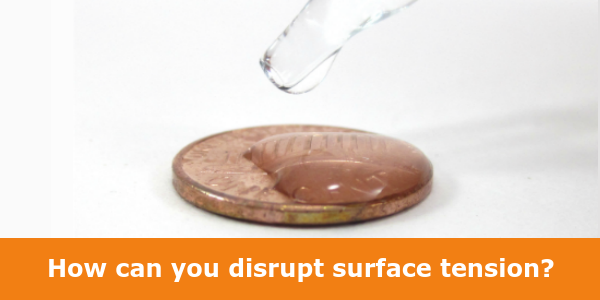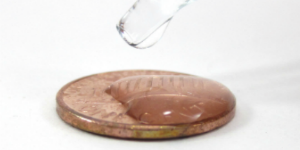Measuring Surface Tension with a Penny: Weekly Science Spotlight
Log In
What makes drops of water on a penny appear to pool together on the top of the penny as a large drop rather than run over the sides? Attraction of the water molecules holds the surface of the water together until the amount of water is too great and spills over the edge. This attraction results in surface tension—something we can see visually in the way the droplet may seem to hold together as a jiggly whole rather than flowing freely over the edges of a surface. You can see surface tension in the way rain drops collect when they hit a surface as well.
Surface tension may help keep the beverage you pour into a cup from overflowing, but sometimes you want to get rid of surface tension—like when you do the dishes If you need to disrupt surface tension, you need a solution that helps break the attraction between molecules. This kind of solution is called a surfactant. In this week's family science activity, explore the way soap decreases the surface tension of water by testing with water droplets on a penny.
- Measuring Surface Tension of Water with a Penny (Science Buddies project idea)
- Measure Surface Tension with a Penny (science activity at Scientific American)
Categories:
You Might Also Enjoy These Related Posts:
- Plastics and Earth Day - Science Projects
- Arduino Science Projects and Physical Computing
- 10+ Robotics Projects with the BlueBot Kit
- 5 STEM Activities with Marshmallow Peeps
- March Madness Basketball Science Projects: Sports Science Experiments
- Women in STEM! More than 60 Scientists and Engineers for Women's History Month
- Explore Artificial Intelligence and Machine Learning with Student AI Projects
- 10 Reasons to Do the Rubber Band Car Engineering Challenge
Explore Our Science Videos
How to Make Edible Rice Paper
Make a Straw Siphon
How Far Will It Fly? Explore Drag with Paper Airplanes











